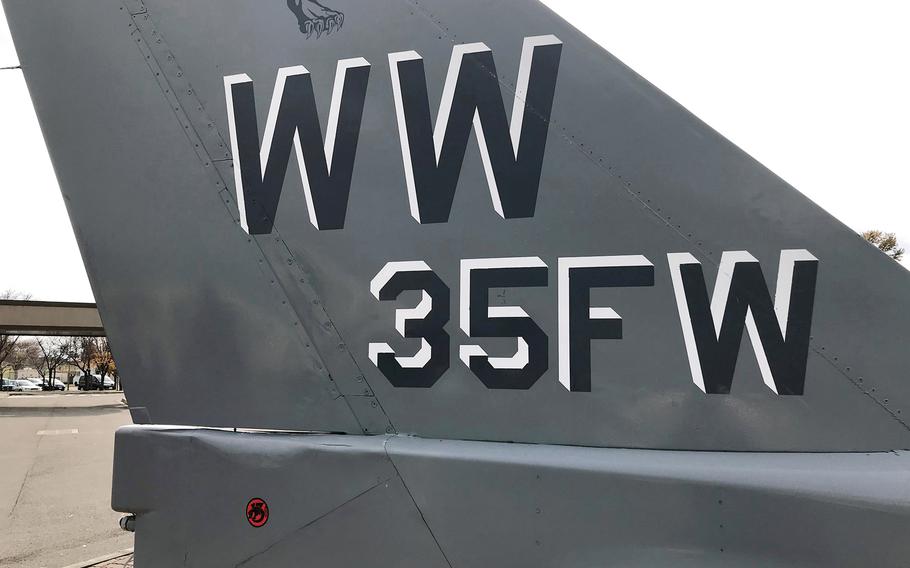
Misawa Air Base is home of the 35th Fighter Wing in northeastern Japan. (Aaron Kidd/Stars and Stripes)
High levels of chemicals used in firefighting foam have been detected near a U.S. Air Force base in northeastern Japan, officials announced Wednesday.
PFAS — per- and polyfluoroalkyl substances — was found at five places near Misawa Air Base during a December survey, according to data posted on the Aomori Prefectural Office website.
The Air Force’s 35th Fighter Wing and Japan Air Self-Defense Force operate from the base.
PFAS, and its components, PFOS and PFOA, are also found in many household products, from stainproof and waterproof fabric to nonstick cookware, according to the American Cancer Society. They are linked to an increased risk of certain tumors of the liver, testicles, breasts and pancreas.
U.S. Forces Japan announced in November that the U.S. military had destroyed its last supplies of firefighting foam containing the chemicals at installations in the country.
The Misawa survey, conducted by local and central government officials, detected the highest chemical levels at one location since testing began in 2022, an official at Misawa city’s environment protection section told Stars and Stripes by phone Thursday.
Some Japanese government officials may speak to the press only on condition of anonymity.
In January 2022, the wing reported that water had leaked through a cracked pipe that once held firefighting foam in a hardened aircraft shelter on Misawa and flowed into the wastewater treatment system.
Three months later, a water quality survey at the Itsukawametsutsumi reservoir, near the air base, found 14 times more PFAS than Japan’s national provisional target value of 50 nanograms per liter.
The December survey found 760 nanograms of PFAS per liter in water from the reservoir. Seawater just over a half-mile offshore contained 0.8 nanograms of PFAS per liter, according to the data posted online.
Tests found 180 nanograms of PFAS per liter of water in drains connected to a reservoir in Tengumori, also near the base, the data show.
Water in those reservoirs has not been used for drinking and the city will continue to monitor the situation, the Misawa city official said.
Water in Ane Numa, a freshwater pond south of Lake Ogawara, also near the base, contained 22 nanograms of PFAS per liter, the data show.
Water from the lake, tested at three sites, had between 2.2 to 2.7 nanograms of PFAS per liter, according to the data.
Air Force officials at Misawa did not respond to emailed requests for information Thursday morning and did not answer phone calls that afternoon.
The next survey will be conducted in May, according to the prefectural website.